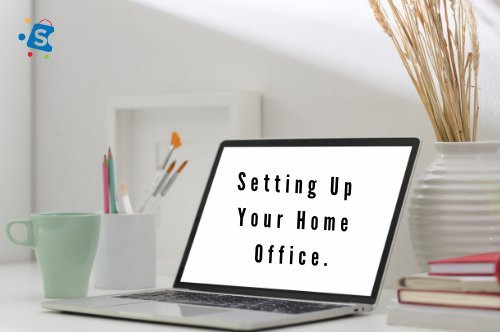Setting Up Your New Laptop: A Beginner’s Guide

Congratulations on your new laptop! Whether a tech enthusiast or a beginner, setting up a new laptop can be exciting and daunting. This guide will walk you through the essential steps to ensure your new device is ready. From unboxing to installing software and securing your system, we’ll cover everything you need to know.
Unboxing Your Laptop
The first step is unboxing your new laptop. Here’s what you should do:
- Carefully Remove the Packaging: To avoid damage, take your time to unbox the laptop carefully. Keep all the packaging materials if you need to return or exchange the device.
- Check for Accessories: Ensure that all accessories, such as the charger, user manuals, and any additional items, are included in the box.
Initial Physical Setup
Before powering on your laptop, you need to perform a few physical setup steps:
- Connect the Power Adapter: Plug the power adapter into your laptop and connect it to a power outlet. It’s advisable to fully charge the battery before using the laptop on battery power.
- Attach Any Peripherals: If you have any peripherals such as a mouse, external keyboard, or monitor, connect them now.
Powering On for the First Time
Once everything is connected, it’s time to power on your laptop. Press the power button and wait for the computer to boot up. The initial boot may take a few minutes as the operating system sets up the basic configuration.
Operating System Setup
Your laptop will guide you through the initial setup of the operating system. Here are the steps for both Windows and macOS:
Setting Up Windows
- Choose Your Region and Language: Select your country and preferred language.
- Connect to Wi-Fi: Choose your Wi-Fi network and enter the password to connect to the internet. This step is crucial for downloading updates and additional settings.
- Sign In or Create a Microsoft Account: You can sign in with an existing Microsoft account or create a new one. This account helps you sync settings and access services like OneDrive and the Microsoft Store.
- Set Up Security Options: Choose your preferred security options, such as setting up a PIN, password, or facial recognition if your laptop supports it.
- Configure Privacy Settings: Review and adjust privacy settings according to your preferences. You can choose what data to share with Microsoft.
Setting Up macOS
- Select Your Country and Language: Choose your country and preferred language.
- Connect to Wi-Fi: Select your Wi-Fi network and enter the password to connect.
- Sign In with Your Apple ID: Sign in with your Apple ID or create a new one. This account is essential for accessing iCloud, the App Store, and other Apple services.
- Set Up Security Features: Enable Touch ID, and Face ID, or set up a password to secure your laptop.
- Review Privacy Settings: Configure privacy settings to control what information you share with Apple.
Updating the Operating System
After the initial setup, updating your operating system to the latest version is crucial to ensure you have the latest features and security patches.
Updating Windows
- Open Settings: Click on the Start menu and select Settings.
- Go to Update & Security: Navigate to the Update & Security section.
- Check for Updates: Click on “Check for updates” and allow Windows to download and install any available updates.
Updating macOS
- Open System Preferences: Click on the Apple menu and select System Preferences.
- Go to Software Update: Click on Software Update and allow macOS to check for and install any available updates.
Installing Essential Software
Once your operating system is up to date, the next step is to install essential software that you’ll need for everyday tasks. Here are some recommendations:
Web Browsers
While both Windows and macOS come with built-in browsers (Microsoft Edge and Safari, respectively), you might prefer alternatives like:
- Google Chrome
- Mozilla Firefox
Office Suites
For productivity, you’ll need an office suite. Some popular options include:
- Microsoft Office 365: A subscription-based service that includes Word, Excel, PowerPoint, and more.
- Google Workspace: A cloud-based suite with Docs, Sheets, Slides, and other tools.
- LibreOffice: A free, open-source office suite.
Antivirus Software
Protecting your laptop from viruses and malware is essential. While Windows 10 and 11 come with built-in Windows Defender, you might consider additional protection:
- Norton Antivirus
- McAfee Total Protection
- Bitdefender
Communication Tools
To stay in touch with colleagues, friends, and family, consider installing:
- Zoom
- Skype
- Microsoft Teams
- Slack
Other Useful Software
Depending on your needs, you might also want to install:
- Media Players: VLC Media Player, Spotify
- Photo and Video Editing: Adobe Photoshop, Adobe Premiere Pro, GIMP
- Cloud Storage: Google Drive, Dropbox, OneDrive
Configuring System Settings
Now that your software is installed, it’s time to configure your system settings to optimize your laptop’s performance and usability.
Power Settings
Adjust your power settings to balance performance and battery life:
- Windows: Go to Settings > System > Power & Sleep to configure sleep and display settings.
- macOS: Open System Preferences > Energy Saver to adjust battery and power adapter settings.
Display Settings
Ensure your display settings are configured for optimal viewing:
- Windows: Go to Settings > System > Display to adjust resolution, brightness, and scaling.
- macOS: Open System Preferences > Displays to configure resolution and brightness.
Backup Settings
Set up regular backups to protect your data:
- Windows: Use File History or Backup and Restore (Windows 7) found in Settings > Update & Security > Backup.
- macOS: Use Time Machine, accessible from System Preferences > Time Machine.
Securing Your Laptop
Security is paramount for protecting your data and privacy. Here are some steps to enhance your laptop’s security:
- Enable Firewall: Ensure your firewall is enabled to protect against unauthorized access.
-
-
Windows: Go to Settings > Update & Security > Windows Security > Firewall & network protection.
-
macOS: Open System Preferences > Security & Privacy > Firewall.
-
-
- Set Up a Reliable Password: Use a strong, unique password for your user account.
-
Enable Encryption: Encrypt your hard drive to protect your data in case of theft.
-
-
Windows: Use BitLocker, accessible from Control Panel > System and Security > BitLocker Drive Encryption.
-
macOS: Use FileVault, accessible from System Preferences > Security & Privacy > FileVault.
-
-
- Install Antivirus Software: As mentioned earlier, having reliable antivirus software is crucial.
- Update Regularly: Keep your operating system and software up to date to protect against vulnerabilities.
Personalizing Your Laptop
Finally, make your laptop truly yours by personalizing it:
Customize the Desktop
Set a custom wallpaper and theme to make your desktop look appealing:
- Windows: Go to Settings > Personalization to change the wallpaper, theme, and colors.
- macOS: Open System Preferences > Desktop & Screen Saver to select a wallpaper and screensaver.
Organize Your Files
Create a folder structure that works for you and helps keep your files organized. Consider using cloud storage for easy access and backup.
Set Up Shortcuts
Create shortcuts for frequently used applications and files on your desktop or taskbar for easy access.
Install Useful Widgets
Add widgets to your desktop for quick access to information like weather, calendar, and system performance.
Conclusion
Setting up a new laptop might seem overwhelming, but following these steps ensures your device is configured correctly and ready for use. This guide covers everything you need to get started, from unboxing and initial setup to installing essential software and securing your system. Enjoy your new laptop and the endless possibilities it offers!







